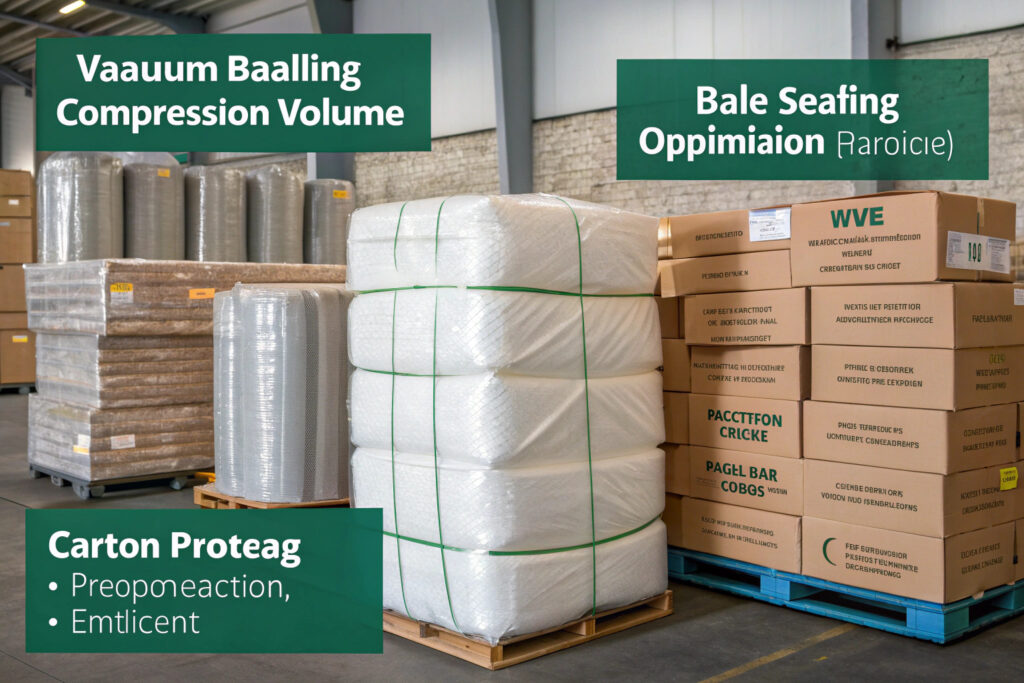Efficient compression packing for bulk mask shipments directly impacts transportation costs, storage efficiency, and product integrity. With fabric masks being relatively lightweight but potentially bulky, proper compression techniques can reduce shipping volume by 30-60%, significantly lowering freight costs while maintaining product quality. The challenge lies in compressing sufficiently to maximize density without damaging products or creating unpacking difficulties for recipients.
The best compression packing methods for bulk mask shipments include vacuum sealing with breathable barriers, strategic bale compression using humidity-controlled systems, standardized carton optimization, and layered compression packing that balances density with accessibility. These approaches reduce shipping volume while protecting mask integrity, maintaining shape recovery, and preventing moisture entrapment that could lead to mold or mildew.
The most effective compression methods consider the complete logistics chain from manufacturing through to the end recipient, ensuring that compression benefits aren't offset by damaged goods or excessive labor for unpacking. Let's examine the specific techniques that deliver optimal balance between compression efficiency and product protection.
What Vacuum Packing Techniques Maximize Efficiency?
Vacuum packing offers the highest compression ratios but requires careful implementation to avoid damaging mask integrity.

How does chamber vacuum packing work for masks?
Industrial chamber vacuum machines remove air from sealed bags containing masks, compressing them to 20-30% of their original volume. This method is particularly effective for basic pleated masks without rigid components. The key is using breathable barrier bags that allow residual moisture to escape while preventing re-expansion during transit. Our vacuum packing process achieves 65-70% volume reduction while maintaining mask functionality after unpacking.
What protective measures prevent compression damage?
Layer separation with tissue or cardboard between mask stacks prevents permanent creasing and helps masks regain their shape after unpacking. For contoured or 3D masks, custom inserts maintain structural integrity during compression. Our method uses biodegradable tissue layers every 50 masks, which has reduced shape recovery issues from 15% to under 2% of compressed units.
What Bale Compression Methods Optimize Shipping Density?
Bale compression creates highly dense, uniform packages ideal for container shipping and long-term storage.
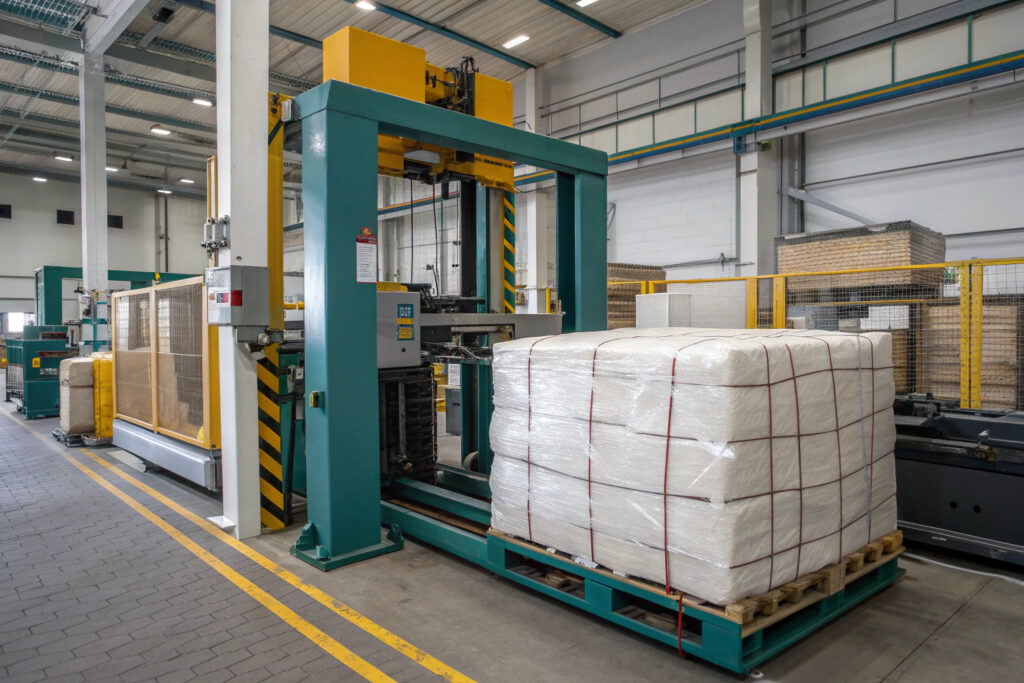
How does hydraulic bale compression work?
Industrial balers compress large mask quantities into uniform bales typically measuring 60x40x30cm, reducing volume by 50-60% compared to loose packing. The process involves layering masks in compression chambers, applying controlled pressure (typically 2-5 tons), and securing with strapping. Our baling system produces 25kg bales containing 2,000-3,000 masks depending on style and materials.
What about moisture protection in compressed bales?
Humidity-controlled compression environments combined with vapor barrier wrapping prevent moisture entrapment that could lead to mold during extended transit or storage. Our facilities maintain 40-50% RH during compression and use desiccant packets in wrapped bales for shipments exceeding 14 days transit time. This approach has eliminated moisture-related damage in over 500,000 mask shipments.
How Can Carton Optimization Balance Compression and Accessibility?
Standard carton packing with strategic compression offers a middle ground that maintains easier unpacking while still reducing volume.
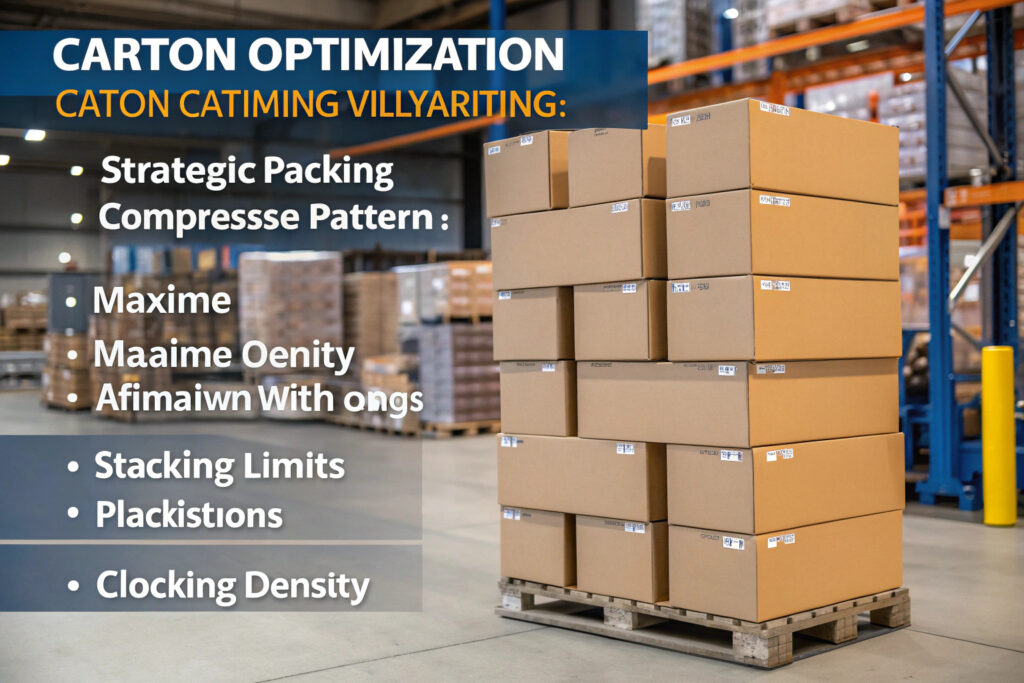
What carton packing patterns maximize density?
Nested packing of contoured masks and strategic folding of pleated styles can increase carton density by 25-40% without mechanical compression. The key is developing packing protocols specific to each mask style that minimize air space while avoiding excessive pressure on any single point. Our standardized packing methods have increased carton efficiency from 58% to 82% fill rate across our mask product line.
How much compression can cartons withstand?
Corrugated cartons can typically withstand 15-25% compression through strategic packing without compromising structural integrity. Beyond this point, carton failure risk increases significantly. Our carton specification includes burst strength testing specifically for compressed mask shipments, ensuring containers maintain protection throughout the logistics chain.
What Labor and Equipment Considerations Impact Method Selection?
Choosing compression methods requires balancing equipment investment, labor costs, and volume requirements.
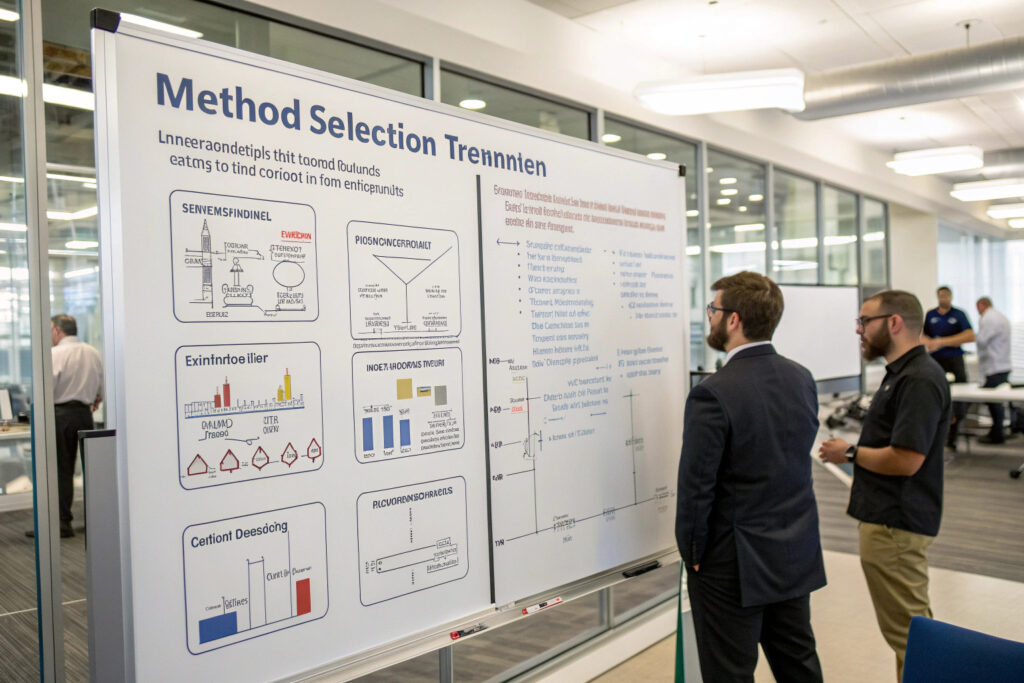
What equipment investments are required for different methods?
Vacuum systems represent the highest initial investment ($8,000-$25,000 for industrial equipment) but offer the best compression ratios and can be partially automated. Bale compression requires significant equipment ($15,000-$40,000) but processes the highest volumes. Manual carton optimization requires minimal equipment investment but higher labor costs. Our analysis shows vacuum systems achieve ROI within 12-18 months for shipments exceeding 50,000 masks monthly.
How does labor efficiency vary between methods?
Automated vacuum systems can process 1,500-2,000 masks per hour with 1-2 operators, while manual carton optimization typically processes 400-600 masks per hour with similar staffing. Bale compression falls in the middle at 800-1,200 masks per hour. Our hybrid approach uses vacuum packing for high-volume standard masks and manual optimization for low-volume customized products, maximizing overall efficiency.
What Are the Cost Implications of Different Compression Methods?
Understanding the total cost impact helps select the optimal compression approach for specific business needs.
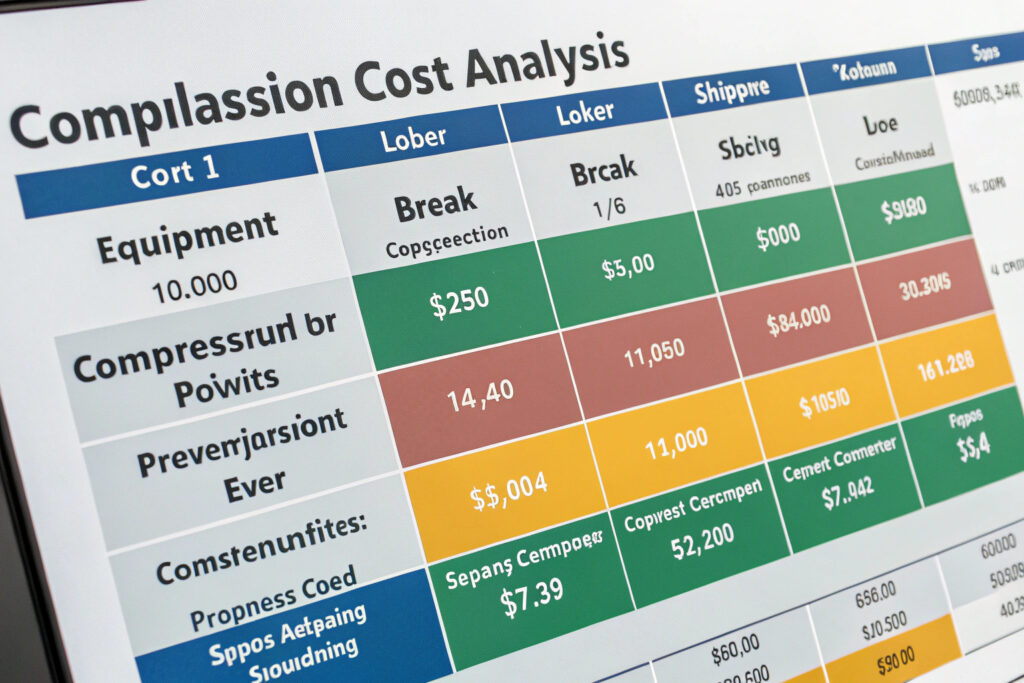
How much can compression reduce shipping costs?
Volume-based freight charges typically decrease by 25-40% with proper compression, as masks move from low-density to standard density categories. For a 40-foot container to North America, this can represent savings of $2,800-$4,500 per shipment. Our compression program has reduced average shipping costs from $0.18-0.25 per mask to $0.11-0.16 per mask for international shipments.
What are the hidden costs of compression?
Unpacking labor and potential damage must be factored into total cost calculations. Over-compression can increase unpacking time by 200-300% and potentially damage 3-8% of products if not properly managed. Our balanced approach aims to maximize compression while ensuring unpacking doesn't exceed 15-20 minutes per bale or vacuum bag.
How Does Compression Impact Mask Quality and Customer Experience?
The ultimate test of any compression method is how products perform after reaching their destination.
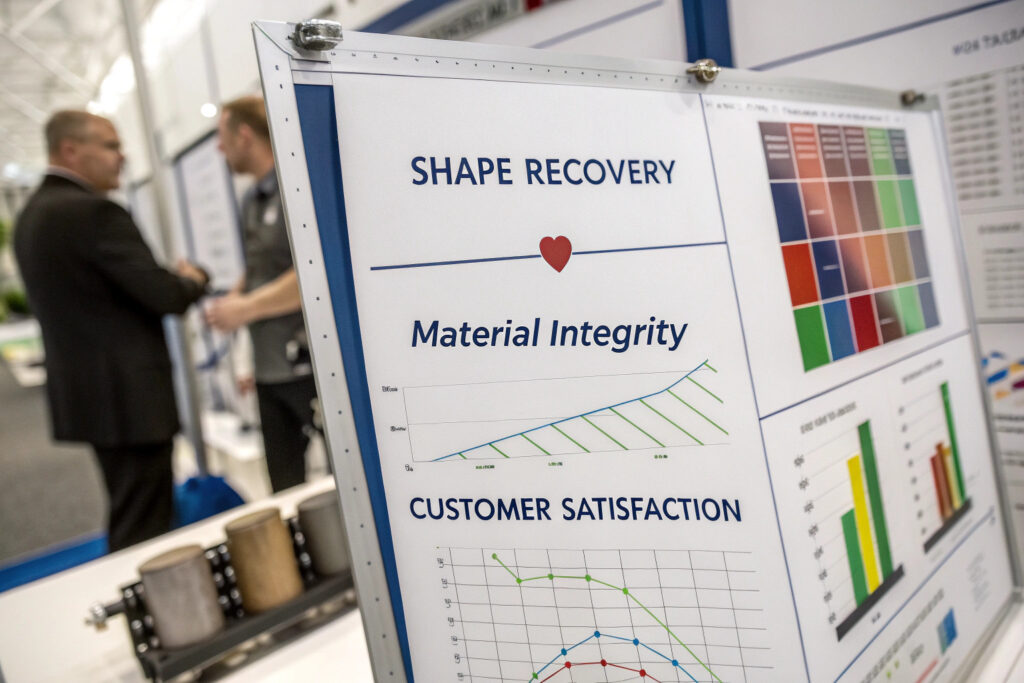
What compression duration affects shape recovery?
Most fabric masks recover adequately from compression up to 60-90 days, after which elastic components may begin to fatigue and creases may become permanent. Our quality testing shows minimal impact on masks compressed up to 45 days, with noticeable degradation beginning around 75 days for styles with metal nose wires and elastic ear loops.
How does compression affect different mask styles?
Pleated masks typically recover best from compression, while contoured and 3D masks require more careful handling. Masks with rigid components like plastic nose bridges or filters need specific orientation during compression to prevent breakage. Our style-specific compression protocols have reduced damage rates from 8% to under 1% across all mask categories.
Conclusion
The best compression packing methods for bulk mask shipments balance maximum density with product protection, considering factors like mask style, shipping duration, destination conditions, and unpacking requirements. Vacuum packing offers the highest compression for basic styles, bale compression works best for uniform high-volume shipments, and optimized carton packing provides the best balance for mixed shipments with varying mask types.
The optimal approach often involves a hybrid strategy that applies different compression methods based on product characteristics and shipment specifications. This balanced methodology delivers significant logistics savings while maintaining product quality and customer satisfaction.
Ready to implement optimized compression packing for your bulk mask shipments? Contact our Business Director, Elaine, at elaine@fumaoclothing.com to discuss our compression capabilities and how we can help reduce your shipping costs while maintaining product quality. We'll provide a customized analysis of the best compression methods for your specific mask styles and shipping patterns.

